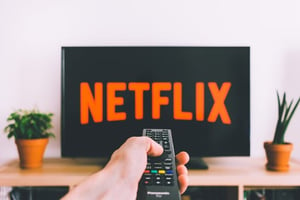
The devices people use to stream movies, television shows, and videos is shifting away from larger television screens to smaller smartphone displays. Consumer research groups estimate that consumers will watch up to half of all television and on-demand content on mobile devices by 2020.
Younger age groups are driving the shift from the large to the small screen. Viewers between the ages of 18 to 34 make up the lowest percentage of those who use TVs to view online content.
Emerging Trends
![]() While TV remains the predominant method for viewing online content across all age groups, the smartphone is gaining equal ground for viewers between 18 and 49. Here are some additional insights about the expected changes in video content viewing:
While TV remains the predominant method for viewing online content across all age groups, the smartphone is gaining equal ground for viewers between 18 and 49. Here are some additional insights about the expected changes in video content viewing:
- Eighty-one percent of those who own a smartphone use it to stream video, according to a study by NPD Group. The most popular streaming apps are YouTube and Netflix.
- According to NPD Group, smartphone users are consuming more cellular data due to video content streaming, at an average of 3GB per month.
- Sharing of online videos through chat apps, such as Facebook Messenger, is expected to increase.
- Viewing video content on a smartphone is most likely to happen at home or while in the company of friends and family.
- The length of videos viewed on smartphones is increasing, with rapid jumps in the percentage of viewers willing to watch videos at least five minutes long.
- According to Limelight Networks, the smartphone is the second most popular device for viewing online video content.
Perceptions and Behaviors
 Paid subscriptions to one or two streaming services, such as Amazon Prime and Netflix, are the norm. A small percentage of online content viewers subscribe to three or more services. Price is a major factor in whether viewers keep their subscriptions. Video playback speed and quality are also top concerns.
Paid subscriptions to one or two streaming services, such as Amazon Prime and Netflix, are the norm. A small percentage of online content viewers subscribe to three or more services. Price is a major factor in whether viewers keep their subscriptions. Video playback speed and quality are also top concerns.
A majority of viewers will stop watching a video online if the video cuts out, stops, or rebuffers. Over sixty-one percent of viewers will stop watching if a video rebuffers twice, according to Limelight Networks. Quality high-speed internet connections and eliminating interference between a Wi-Fi router and the device can help.
Despite the growth in paid subscriptions to streaming services, most households still maintain cable or satellite television service. Those who have cut the cord have done so because of increasing costs. This trend is shifting as younger generations are more interested in subscribing to individual channels.
Broadband TV News estimates the percentage of U.S. households with at least one subscription video on demand (SVOD) service will grow to 73.5% by 2023. On average, households are expected to start subscribing to slightly over two services within the same timeframe.
Do you use your smartphone to stream video? What do you watch and how often? Tell us about it below!
